Solutions
Horse Construction offers full range of structural strengthening materials with technical supports, documentation supports, products supports, project supports.
Key Points of Strengthening Concrete Column with Increasing Section
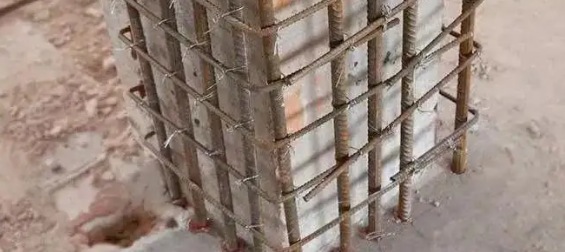
Compared with many ways to reinforce columns, the enlarged section reinforcement method was widely used in the field of building reinforcement in the early days. Its advantages are low material requirements, simple structure and strong applicability, especially for the reinforcement of components with significantly smaller original cross-sectional dimensions and significantly higher axial compression ratios. The main disadvantage is that there are many wet operations, long construction period, large amount of engineering and more use of machinery.
Process principle
When the reinforcement ratio is appropriate, the bearing capacity of the concrete flexural member increases with the increase of the total area of the reinforcement. Therefore, increasing the cross-sectional area of the reinforcement in the cross-section of the structure can significantly improve the flexural performance of the original member. Then, the cast-in-place concrete is added to the concrete compression area, and the normal section bearing capacity of the component can be improved by the joint work of the new part and the original structure.
construction process
Repair the original structure
Foundation planting reinforcement construction
Rebar binding
Install the template
pour concrete
Maintenance and demoulding
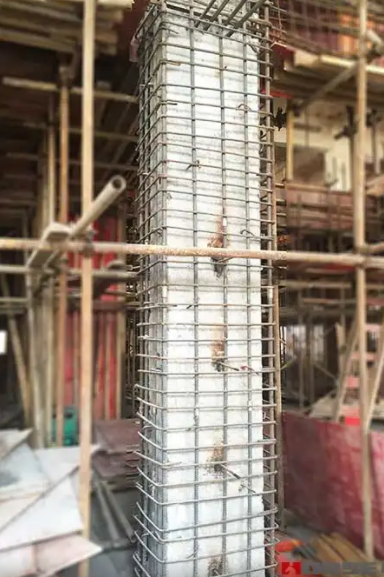
Quality Control Points
1. Guaranteed connection strength of new reinforcement
The newly added steel bars shall have the factory's quality inspection certificate and test report, and shall be sampled for mechanical property test and welding test before they can be put into use. Then, the grade, specification, cutting length and shape of the steel bar should be selected strictly according to the requirements of the design drawing, and the number of steel bar joints should be minimized.
The newly added steel bars (including planting stirrups) need to be connected with the original steel bars, and the concrete columns with enlarged cross-sections on all sides shall be reinforced to ensure that the newly added stirrups are closed. When the concrete column is reinforced with single, double or three-sided enlarged section, if it cannot be sealed, the new shrinkage bar and the original stirrup can be welded to achieve sealing. The inner hoops are drilled and planted. After the hole is cleaned, the reinforced plastic should be injected and the rebar should be inserted. The height of the new stirrups should be staggered by 50 mm from the original stirrups, and the anchoring depth should strictly conform to the requirements of the design drawings. The outer stirrup is welded with the original outer stirrup, and the welding length of one side should not be less than 10 (the diameter of the stirrup).
2. Concrete vibrators
After the concrete is poured, it should be vibrated to remove the air bubbles generated by the concrete winding, so that the concrete is poured evenly, so as to improve the structural strength and ensure the quality of the concrete components. When pouring concrete layer by layer, the thickness of each layer of concrete should not exceed 1.25 times the length of the vibrating rod. During the vibrating process, the vibrating rod should be shaken up and down to make the up and down vibrating evenly. When vibrating the upper concrete, it should be carried out before the initial setting of the lower concrete, and the vibrating rod should be inserted into the lower concrete 5~10cm, so that the two layers of concrete poured successively become a whole. The concrete surface should be flat, without obvious settlement and air bubbles. When using a vibrator, the distance between the vibrator and the formwork should not exceed 0.7 times the radius of the vibrator, it is not suitable to vibrate near the formwork, and collisions with steel pipes, pipes, rings, embedded parts, etc. should be avoided.
3. Ensure the density of concrete
Self-compacting concrete or micro-expanding concrete can be used when the column section is reinforced by increasing the section method, which can ensure the compactness and crack resistance of the concrete, and improve the strength and rigidity of the column structure.
The main characteristics of self-compacting concrete are that it has high fluidity, is not discrete, and does not leak. It can fill various forms of space by its own weight, and has good filling characteristics for dense steel bars and complex structures. It can form dense concrete structures without vibrating (or slightly vibrating), and has good mechanical properties and durability. Concrete construction that is difficult to vibrate brings great convenience, which can avoid quality defects caused by insufficient vibration, eliminate noise pollution caused by vibration, and improve concrete construction efficiency.
Generally, the shrinkage and deformation of concrete due to drying shrinkage, creep, and temperature difference effects will generate tensile stress inside the structure. When this tensile stress is greater than the ultimate tensile stress of concrete, cracks will occur. When using micro-expansion concrete, in the initial stage of concrete curing, the concrete structure will expand and deform and release energy, which can optimize the microstructure inside the concrete structure and generate a certain compressive stress and compressive strain inside the structure. Since the structure is in a plastic state, it can compress and fill a large number of voids, offset the stress caused by shrinkage deformation, and effectively improve the crack resistance of the structure.
In addition, adding a micro-expansion agent to the mixed soil can improve the bonding performance of the joint surface, ensure that the old and new concrete can work as a whole, bear the force together, and reduce the shrinkage of the reinforced concrete.
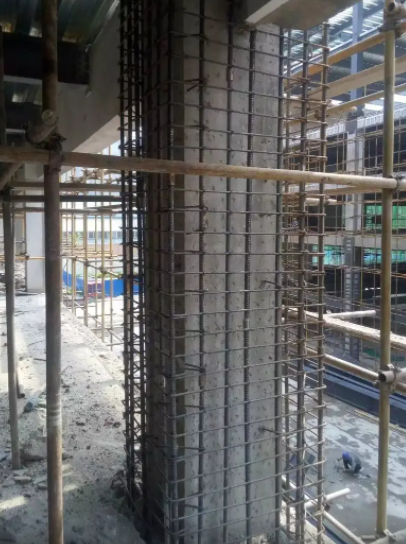
4. Prevent template expansion
Expansion is a common phenomenon in the firing process of concrete columns, which is caused by the large slump of concrete and the fast pouring process. When the lower part of the concrete layer is just poured and the initial setting has not yet started, the continuously poured concrete on the upper layer will continue to increase the lateral pressure of the formwork, and its own horizontal and vertical pressure will easily cause the mold to expand.
In order to prevent concrete from expanding, the following measures can be taken:
1) The bottom corner base surface of the column formwork structure must be flat, and the flatness should be controlled within 2 mm. Before supporting the formwork, the bottom corner of the formwork should be leveled with a sand frame, and the bottom corner of the formwork should be sealed with cement mortar to prevent slurry leakage at the joints of the formwork.
2) When pouring the bottom plate, insert 020mm steel bar head so that the lower corner of the formwork does not shift, and use a scaffolding tube to fix the outside of the formwork.
3) The tension bolts should be arranged on both sides of the formwork, and double caps should be used for the tension bolt caps within 1m from the root of the column to increase the safety factor. Strictly check the spacing of the pull bolts (the spacing is 400mm, the lower part of the column is densified within 1m, and the spacing is 300mm), and the external size of the kanban wall
4) When pouring the next layer of concrete, fix the 20mmx20mm wooden strip in the upper entrance of the formwork, so that the upper entrance of the poured concrete forms a convex shape. When the upper layer of formwork is supported, the lower opening can be in close contact with the concrete surface, and there are steel support feet as the tie bolts to ensure that the lower opening formwork does not have mold expansion.
5) The joints of the formwork should be fixed with wooden cross seams to strengthen the support and ensure the smooth surface of the formwork.
6) When removing the formwork, it must be carried out under the condition that the strength of the concrete can be guaranteed, so as not to damage the surface and corners of the concrete when the formwork is removed. The dismantling type cannot be disassembled as a whole, and must be disassembled from top to bottom.
5. Control old and new concrete stickiness
The biggest problem of the cross-section reinforcement method with increased joint strength is the functional combination of the old and new concrete parts. When subjected to force, the joint surface of the old and new concrete is the weak part. If the strength of the interface between the old and new concrete structures is too low, the load stress cannot be effectively transmitted, and if the strength is too high, it will cause brittle fracture hazards. Therefore, placing enough shear friction ribs or anchoring members on the joint surface can strengthen the connection between the old and new parts, ensure the effective transmission of external forces on the joint surface, and make the old and new concrete work as a whole.
Generally, after roughening the concrete interface (bonding surface) of the original component, brush the structural interface glue, and brush the interface agent on the surface of the old concrete that has undergone roughness treatment to improve the bonding microstructure of the old concrete and improve the bonding performance. It should be noted that the interface with strong adhesion, good water resistance and strong aging resistance should be selected. The interface agent can improve the adhesion between the old and new concrete and avoid the phenomenon that the interface is not easy to stick due to the surface water absorption or smoothness.
In order to ensure the bonding effect of the interface agent, the following measures can be taken: keep the relative humidity of the construction environment less than 70%, good ventilation, and control the temperature difference between the base surface and the environment within 5t. Before painting the interface, use a wire brush to remove grease, moss, etc. The loose and cracked parts of the concrete surface should be repaired in advance; use a brush to evenly brush the bonding slurry on the base surface, and then let the coating surface dry (about 12h).
You can find anything here you are in need of, have a trust trying on these products, you will find the big difference after that.
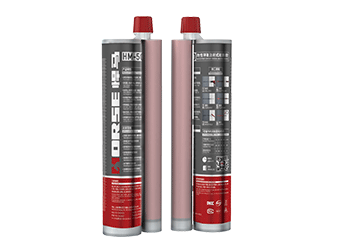
two-components modified epoxy resin adhesive, with high quality plastic tube, double cartridge package
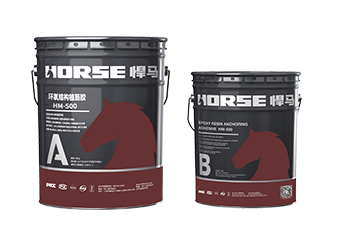
Two-component modified epoxy resin adhesive, applied to chemical planting reinforcing bar and anchor bolt anchoring
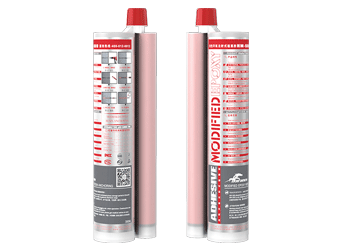
Two-components modified epoxy resin adhesive, with high quality plastic tube, double cartridge package for anchoring